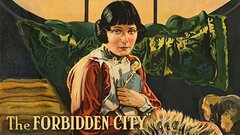A popular dramatic star of the late 1910s and 1920s, actress Norma Talmadge specialized in weepy society melodramas, and became one of the most popular and financially successful performers of the silent era. After receiving her start on the East Coast in "A Tale of Two Cities" (1911) and "The Peacemaker" (1914), Talmadge landed her first starring role in the wartime propaganda picture "The Battle Cry of Peace" (1915).
Moving out to California with her mother and two sisters, Constance and Natalie, both of whom went on to their own success as actresses, she made the disastrous "Captivating Mary Costairs" (1915), before joining D.W. Griffith at the Triangle Film Corporation to make a series of movies, including "The Social Secretary" (1917).
Back in New York, she met and married producer Joseph Schenck, who acted more as her manager than her husband. With Schenck, Talmadge achieved incalculable success, becoming a major star and independently wealthy in the process, thanks to making films under her own banner, the Norma Talmadge Film Corporation. Sticking mostly to dramas - the few comedies she made were dismissed by fans - Talmadge became one of Hollywood's biggest stars with "The Sign on the Door" (1921), "Smilin' Through" (1922), "Secrets" (1924), and "Camille" (1927).
But like many silent performers, she was unable to transition to sound and retired, living the rest of her live in obscurity. Regardless of her quiet exit, Talmadge remained one-half of cinema's most famous sister acts and one of silent Hollywood's most important and successful stars.
Born on May 26, 1893 in Jersey City, NJ, Talmadge was raise with her two sisters, Constance and Natalie, in Brooklyn, NY, by her father Fred, an advertising salesman who worked sporadically but was more fond of drink, and her domineering mother, Peg. After seeing a fellow classmate at Erasmus Hall High School earning money as a model, Talmadge was pushed by her mother to follow suit, leading her to pose for a number of illustrated song slides, which were shown at the time in movie theaters.
Meanwhile, her father had upped and left the family, never to be seen again, leaving her mother to work various odd jobs to take care of Talmadge and her sisters. Because of this abandonment, her mother pushed all three daughters to become actresses in order to make more money. Luckily for them, they lived just a short distance from Vitagraph studios, where Talmadge made her debut in the silent short, "The Four-Footed Pest" (1910). The following year, she had one of her first successes in the adaptation of Charles Dickens' "A Tale of Two Cities" (1911), playing the seamstress who is executed via guillotine.
Talmadge went on to appear in a number of dramas and comedies directed by Vitagraph regular, Van Dyke Brooke, including "His Official Appointment" (1912), "An Old Man's Love Story" (1913), "Father's Hat Band" (1913) and "Goodbye Summer" (1914). After appearing in "The Peacemaker" (1914) and "The Helpful Sisterhood" (1914), she had her first starring role in "The Battle Cry of Peace" (1915), a wartime propaganda film warning against pacifists weakening America's resolve in the face of Germans threatening to infiltrate the country.
She left Vitagraph after five years and some 250-odd films, signed a two-year contract with National Pictures Company and moved to California with her family, where she made her first West Coast picture, "Captivating Mary Carstairs" (1915), a cheapie production that proved to be a disaster while making and flopped with audiences. National Pictures went under and left the young actress unsure of her next move. Undeterred, Talmadge signed with the Triangle Film Corporation, where director D.W. Griffith was also under contract. Her first film for Triangle was the feature-length comedy, "The Social Secretary" (1916), in which she played a young secretary who takes a job with a wealthy woman in order to avoid the amorous attention of her former employer.
Though making strides in early Hollywood, Talmadge moved back to New York, where she met film producer, Joseph Schenck, who was almost 20 years her senior, and married him two months later. Schenck served as Talmadge's manager and mentor, and helped her form the Norma Talmadge Film Corporation in 1917. With her husband determined to turn her into a glamorous star, Talmadge appeared in roughly six films a year - all filmed on the East Coast - including "Panthea" (1917), "The Secret of the Storm Country" (1917), "By Right of Purchase" (1918), "The Forbidden City" (1918), "The Isle of Conquest" (1919) and "The Branded Woman" (1920).
With each passing year, Talmadge's popularity grew, and with it so too did her salary. Adding to the appeal, sister Constance Talmadge was becoming equally famous, resulting in a sister act that appealed to fans. After solidifying her standing with "The Sign on the Door" (1921) and "Passion Flower" (1921), Talmadge had her biggest hit with "Smilin' Through" (1922), playing the dual role of a murdered woman and her young niece, who grows up to look exactly like her and fall in love with a man (Harrison Ford) who is a carbon copy of the man who killed her aunt. A big hit with audiences at the time, the silent drama was remade twice - once in 1932 with Norma Shearer and again in 1941 with Jeannette Brian.
Talmadge continued to please her large fan base with successful dramas like "Within the Law" (1923), "Secrets" (1924), and "Graustark" (1925), but set herself up for disappointment with "Kiki" (1926), one of the few comedies she made in her career. Though critics responded favorably to her performance as well as the film's top-rate production values, "Kiki" failed at the box office. She returned to prominence with "Camille" (1927), a popular adaptation of the Alexandre Dumas story about a wealthy Parisian courtesan who resists love, only to regret her decision after facing a live-threatening illness. The film proved to be Talmadge's last movie for First National.
Meanwhile, she had fallen for "Camille" co-star Gilbert Roland despite still being married to Schenck. Talmadge demanded a divorce, but her husband refused out of fear of breaking up their lucrative partnership. Still, they separated and Schenck went on to produce Talmadge's first films with her new home studio, United Artists. In 1927, Talmadge followed Mary Pickford and Douglas Fairbanks to become the third-ever Hollywood star to have her hand and footprints immortalized in cement outside of Grauman's Chinese Theater on Hollywood Boulevard.
Under the auspices of United Artists, Talmadge made only two more silent films, "The Dove" (1927) and "The Woman Disputed" (1928), both of which were flops at the box office. Meanwhile, sound pictures had begun taking over the industry and Talmadge - who spoke in a thick Brooklyn accent - worked hard with voice coaches in order to make a successful transition to talkies. But all her hard work failed to pay off in the two sound films she made, "New York Nights" (1929) and "Du Barry, Woman of Passion" (1930), which were both heavily criticized and ended up box office flops.
Already frustrated with making movies, Talmadge realized her time was at an end and lost interest in continuing her career, safe with the knowledge that both Schenck and her mother amassed a fortune for her. Without money problems, Talmadge retired and married comedian George Jessel in 1934, only to divorce five years later. Meanwhile, she jet-setted around the world, entertained guests, and commiserated with her sisters, who were also out of the Hollywood game.
In 1946, she married Beverly Hills physician Carvel James and retreated into a life of seclusion that was mired by worsening arthritis. After a series of strokes, Talmadge died from pneumonia on Dec. 24, 1957, being the first of the three sisters to pass away. She was just 63 years old, and was remembered alongside Mary Pickford and Lillian Gish as one of the greatest actresses of the silent era.
By Shawn Dwyer























































































